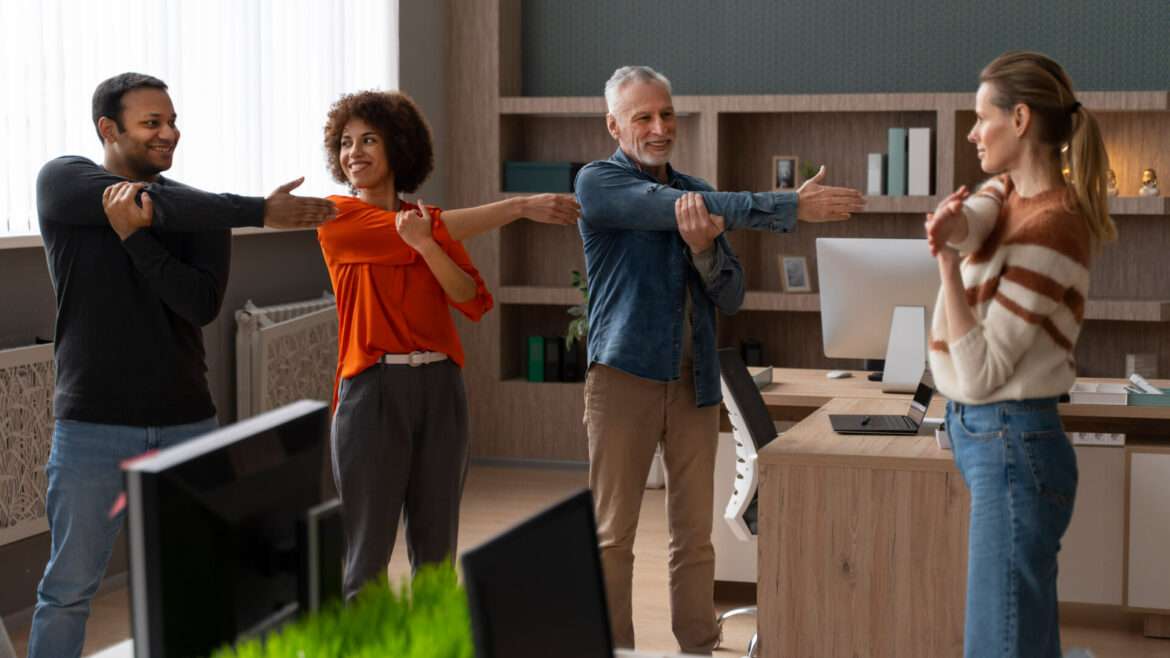An office setting nowadays includes more than simply physical space, especially in the fast-paced business sector. It is an acronym for the convergence of design, culture, and technology—all crucial factors in shaping employee experiences and organizational outcomes. As companies compete for top talent, understanding how the office environment affects employee satisfaction and retention becomes critical.
Table of Contents
- What is the office environment?
- The components of an effective office environment
- Impact of office environment on employee satisfaction
- Influence of office environment on employee retention
- Challenges and considerations in office environment design
- Future trends in office environments
What is the office environment?
The term “office environment” refers to the physical and psychological conditions that make up the workplace. This encompasses everything from the layout of the office, the quality of the furniture, and the technology available to employees to the cultural atmosphere, communication styles, and organizational values. Essentially, the office environment is the backdrop against which daily work activities unfold.

The components of an effective office environment
An effective office setting results from a well-planned physical layout, a supportive work environment, and modern technology. These elements are required to establish a productive and satisfying work environment, which is beneficial for the company’s success and the welfare of its employees.
Physical layout and design
The layout of an office has a big influence on how happy the workers are there. Ergonomic furniture that encourages good posture and a design that maximizes natural light and minimizes noise can greatly enhance comfort and focus. Moreover, a visually pleasing workplace can raise spirits and foster a more enjoyable work environment.
Technology and tools
Providing employees with access to innovative and efficient technologies is crucial to maintaining productivity in the present digital world. Thanks to technology, which includes blazing-fast computers, robust software, useful communication tools, and high-speed internet, employees can do their work more successfully and efficiently. There is an increase in workflow and a decrease in time spent on annoying technical issues.
Workplace culture
The administrative processes, communication strategies, and guiding principles of a company all have a big impact on the culture within the workplace. When they work in a setting that fosters inclusive communication, supports transparency, and acknowledges accomplishments, employees are inspired to perform at their highest level. Effective management strategies that recognize individual contributions and promote professional growth can further improve this positive environment.
An office’s architectural design, technological setup, and culture all work together to create an atmosphere that can either inspire or exhaust its employees. Companies that grasp these three workplace factors may attain organizational goals, retain top talent, and foster employee satisfaction. Thus, creating a successful workplace requires not just recognizing these elements but also investing in them.
Impact of office environment on employee satisfaction
Employee satisfaction is greatly influenced by the workplace, which has an impact on everything from daily engagement to long-term mental health. A well-designed workspace has a direct positive impact on job satisfaction and overall productivity by boosting morale, improving well-being, and promoting flexibility.
Engagement and morale
Studies constantly demonstrate a substantial relationship between employee engagement and the standard of the workplace environment. A dynamic office design that fosters cooperation and communication can improve morale and team spirit. Additionally, decorative touches like artwork and color palettes can uplift morale and make a workspace feel more comfortable.
Well-being and mental health
Natural light, indoor plants, and quiet areas are examples of features that can have a big impact on workers’ mental health. Natural light improves mood and vitality while lowering fatigue and depression risk. In addition to lowering stress and boosting cognitive performance, plants help improve the quality of the air. Employees can withdraw, refuel, and manage stress in quiet zones—spaces that are essential for mental health.
Autonomy and flexibility
Job happiness is greatly increased by flexible workspaces, which let workers customize their workstations or choose where they want to work. This flexibility allows workers to work in ways that best meet their unique needs and preferences while also promoting a better work-life balance.
The workplace environment has a significant impact on engagement, mental health, and employee autonomy, all of which are important factors in determining employee satisfaction. Organizations may cultivate a workforce that is happier, healthier, and more productive by concentrating on these factors.

Influence of office environment on employee retention
Creating a positive work atmosphere is essential for drawing in and keeping outstanding talent. Businesses can drastically lower turnover rates and cultivate a devoted staff dedicated to long-term success by establishing a work environment that fosters engagement and pleasure.
Attraction and turnover rates
Research continuously demonstrates that hiring and staff retention are directly impacted by the standard of the workplace. A well-thought-out, cozy, and visually appealing workplace may attract a lot of potential workers. On the other hand, a bad workplace may result in greater turnover rates. Studies have shown, for example, that offices with poor facilities or little natural light had greater staff turnover rates because of low morale and unhappiness.
Employee loyalty
Fostering loyalty requires a supportive work environment that prioritizes the well-being and professional development of its employees. Employees can feel appreciated and invested in the firm when they have access to benefits like flexible work schedules, personal development opportunities, and a favorable work environment. Their dedication to the organization’s long-term objectives frequently reflects this sense of gratitude and belonging.
Through its influence on everyday experiences and overall job satisfaction, the office environment has a considerable impact on employee retention. Employers may draw in and keep bright workers who are dedicated to their jobs and the success of the company by emphasizing the creation of environments that foster coziness, teamwork, and personal development.
Challenges and considerations in office environment design
Creating a productive workplace requires striking a balance between a number of demands, including budgetary constraints and meeting the requirements of a varied workforce. Understanding these difficulties and taking future trends into account is essential for preserving a flexible and productive work environment as workplace dynamics change.
Cost vs. benefit
For businesses, investing in workplace design is a big financial choice. Modern technology, aesthetically beautiful design features, and ergonomic furniture can be expensive. But these expenses are frequently offset by the advantages. Better workplace layouts can boost output and staff retention, which lowers long-term costs associated with attrition and hiring. Businesses that make investments in more comfortable workspaces and better lighting, for example, report higher levels of employee productivity, which can result in more income.
Diverse needs
A significant obstacle in office design is meeting the varied needs and tastes of a multicultural and multigenerational staff. Every employee could have varied needs and preferences, ranging from the necessity for quiet places to places that promote teamwork. It takes careful planning and frequently adaptable rooms that may accommodate personal preferences without sacrificing the office’s overall functionality to balance these demands.
Future trends in office environments
Sustainability and eco-friendliness
The future of office design is being shaped by the drive towards sustainability. Green building techniques are being adopted by more businesses, which not only helps them lower their carbon footprint but also attracts eco-aware workers. Modern offices are starting to incorporate sustainable elements on a regular basis, such as recycled materials, green roofs, and energy-efficient appliances.
Technology integration
Office environments are about to undergo a change because to emerging technologies like virtual reality (VR) and artificial intelligence (AI). Virtual reality (VR) can be utilized for virtual meetings, eliminating the need for physical space, and AI can optimize office conditions for energy use and efficiency. These technologies make it possible for offices to be more efficient and adaptable, changing to meet the demands of different jobs.
Remote and hybrid models
Employee expectations of physical office space have fundamentally changed due to the transition towards remote and hybrid work arrangements. Rather than being a place for everyday work, the typical office increasingly serves as a hub for social contact and cooperation. This change necessitates reevaluating office design to provide more adaptable and multipurpose areas.
Conclusion
Creating an office space is a challenging yet gratifying task. It calls for a careful consideration of the various needs of employees, a cost-benefit ratio that strikes a strategic balance, and an openness to new trends.
Businesses are better positioned to increase employee satisfaction and achieve higher organizational success when they continuously adapt and improve their workplace settings.
The significance of investing in well-designed office spaces that support and enhance the work being done within them is highlighted by the symbiotic relationship between an effective office environment and organizational success.

Andy is a technology & marketing leader who has delivered award-winning and world-first experiences.


